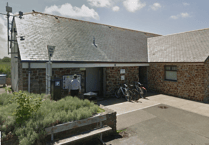THERE are more than 1,300 species of lichen that grow in Britain, and around 500 of them grow on trees.
The rest grow on walls, roofs, heathland and sand dunes.
They are not true plants but a partnership of fungus and algae, which is the very simplest form of plant life and a group that are growing undisturbed on stone walls may well be several hundreds of years old.
In fact, according to David Attenborough, lichens will grow anywhere including on rocks and boulders in the frozen areas of Antarctica where nothing else will grow.
The stone hedge around Quethiock School has several groups of pixie cup lichen growing on the stones that look like tiny cups on stems, and they are only around 5-6mm tall.
I walked down to Trehunsey and found some white dead nettles out in bloom.
Now, these nettles are friendly as they do not sting and when in full flower with their white blooms, they could never be confused with the true or stinging nettle that has greenish flowers.
I also spotted a small group of comfrey on waste ground near a field gateway and one of the stems was topped by some white long bell-like flowers.
Comfrey flowers may be cream, white, purple or pink but always the same colour on any one plant.
It might be that white blooms hang on longer towards winter than other colours.
Surprisingly, while still at Trehunist, I found a few honesty flowers out in bloom on short stems.
They also had some almost circular flat fruits which split open when ripe to allow the seeds to escape.
Odd, really, as these flowers appear in April to June so although their seed pods that become translucent, earning their name Lunaria, are still on their stems, these blooms that I photographed must be early 2024 blooms.
On the hedges, many of the hazel trees are showing their new flowers in the form of short catkins and leaf buds.
These catkins or lambs tails as they are named for the way they hang on the branches, will not have their full colours, nor will they be full of pollen until next spring.
Some red seeds of the stinking iris plant stood out on the waste ground near a gateway and they stood out well among the vegetation.
I read somewhere that if you pick some of these pea-sized seeds and plant them in your garden, you will wait several years before you see any movement on the soil.
Passing by the churchyard in the village, I noticed some tall stems of teasels with their dense, prickly flower heads full of seeds.
Some of these seed heads were showing tiny shoots as the seeds began growing before they had dropped to the ground.
These winter stalks and seed heads are sometimes used in dried floral displays, like the silvery pennies of the honesty plant.




